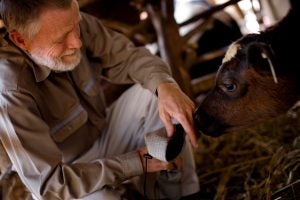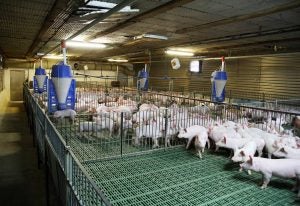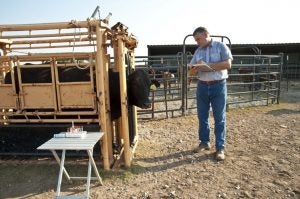During the COVID-19 pandemic, we as a society practiced social distancing to limit the virus’ spread. In a way, farmers have been doing this to protect their animals before it was even cool. This takes the form of biosecurity, and it’s a foundation of livestock production.
Biosecurity is a set of measures to prevent the spread of infectious diseases within a population. Farmers work to prevent the introduction of diseases coming from off-farm sources — people, pets, and wild animals — into their herds or flocks. This also involves keeping diseases from spreading among animals on a farm, and between farms.
Collaboration is key
Farmers work with their veterinarians to create herd health and biosecurity plans specific to the needs of their farms.

Veterinarians provide key insights into the transmission of specific pathogens, whether they be viruses, bacteria, parasites, and more, and how they affect different species of livestock. This collaboration allows for biosecurity plans to be tailored to the needs of the farm.
What does it look like?
The specifics of biosecurity plans can vary between species and farms. In general, the first step is fresh, clean feed and water, as well as regularly cleaned pens, bedding, and barns. Barns help protect livestock and poultry from predators, as well as from bad weather, especially for poultry and pigs. Barns also keep wild animals and pests from introducing deadly diseases, for example, highly pathogenic avian influenza, into farms.
A biosecurity plan may include the screening and proactive quarantining of new or returning animals. It also involves the cleaning and disinfection of trailers and other equipment for transporting animals between groups. Strong vaccination programs can also help prevent many diseases.
Within a farm, separate pens and areas for more susceptible animals can help keep germs from spreading between groups. For example, many farms have a “hospital” pen for any animals that need extra attention beyond the general population. Very young animals can also be more susceptible to disease, similar to human babies, and may have a separate group as well to protect them.

Biosecurity also involves human elements. These include boot wash stations or disposable boot covers — or even full-body suits on some farms to prevent humans from bringing in outside diseases and spreading germs between farms.
Minimizing nonessential personnel and biosecurity signage also plays a role. Think of a farm like your house; you don’t just want random people coming in either!
Why does biosecurity matter?
Biosecurity is an essential part of ensuring animal welfare by preventing disease. As farmers, we’re stewards of our animals, because it’s the right thing to do. Healthy, well-cared-for animals are the foundation of a healthy food supply and are a cornerstone of farming. Healthy animals and farm profitability go hand in hand.
Biosecurity and disease prevention also help us to minimize the number of animals we need to treat, which helps us further reduce our need for antibiotics. Farmers work closely with veterinarians to use antibiotics judiciously to ensure animal health and food safety.

These practices are not about hiding what’s happening on a farm. Many farmers do community outreach and are even on social media talking about what we do.
If you have questions about agriculture, please ask a farmer and others directly involved in agriculture. Farmers care about the well-being of our animals. Biosecurity measures help protect animals from diseases and promote the safety of the food supply.
Michelle Miller, the Farm Babe, is a farmer, public speaker, and writer who has worked for years with row crops, beef cattle, and sheep. She believes education is key in bridging the gap between farmers and consumers.



